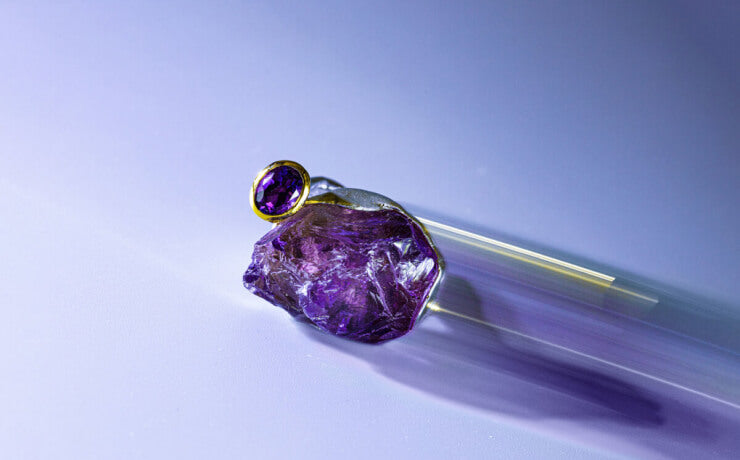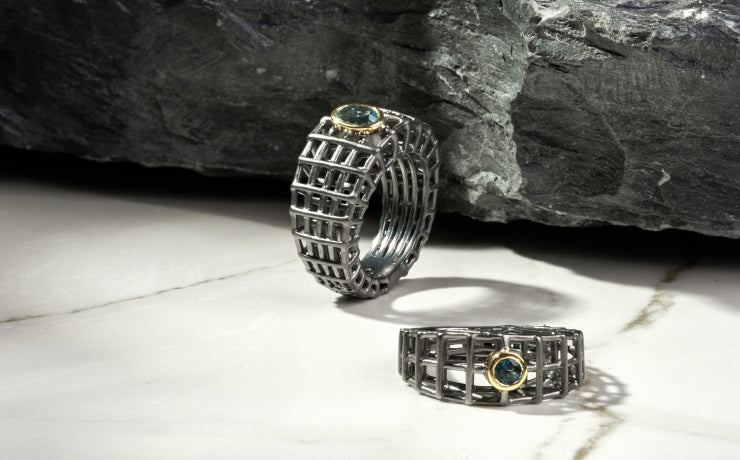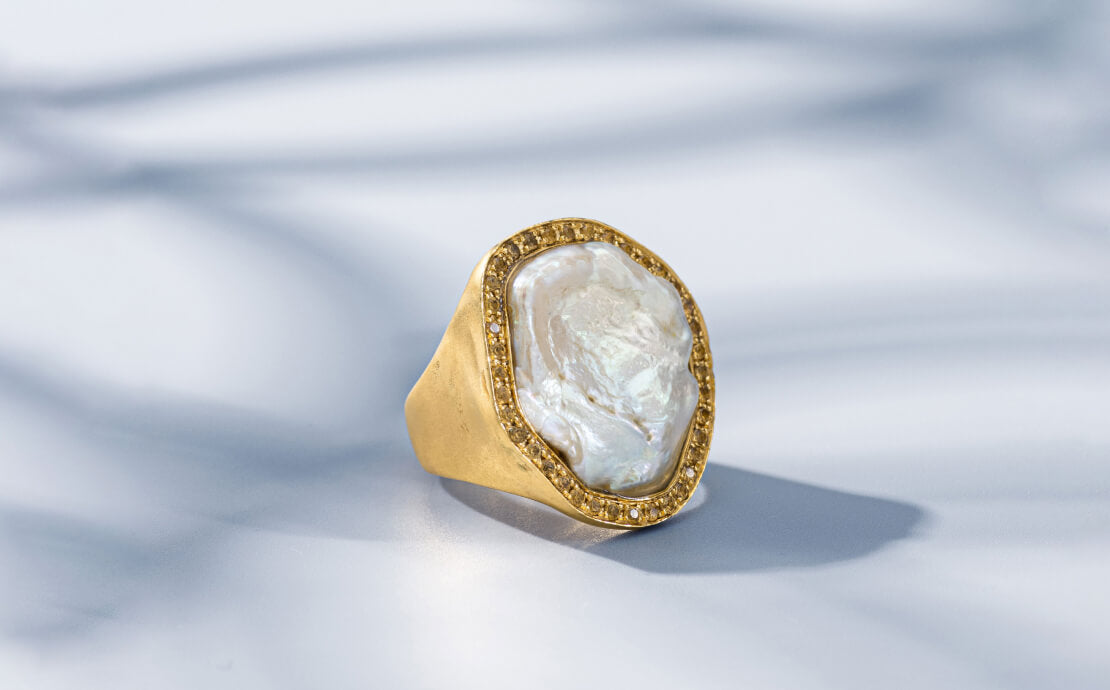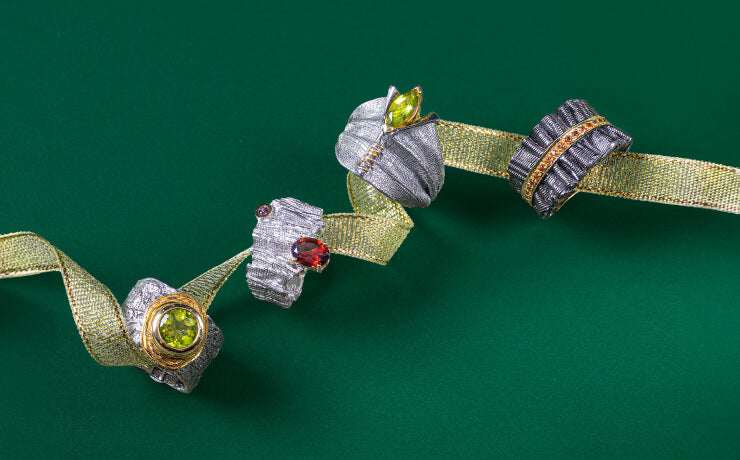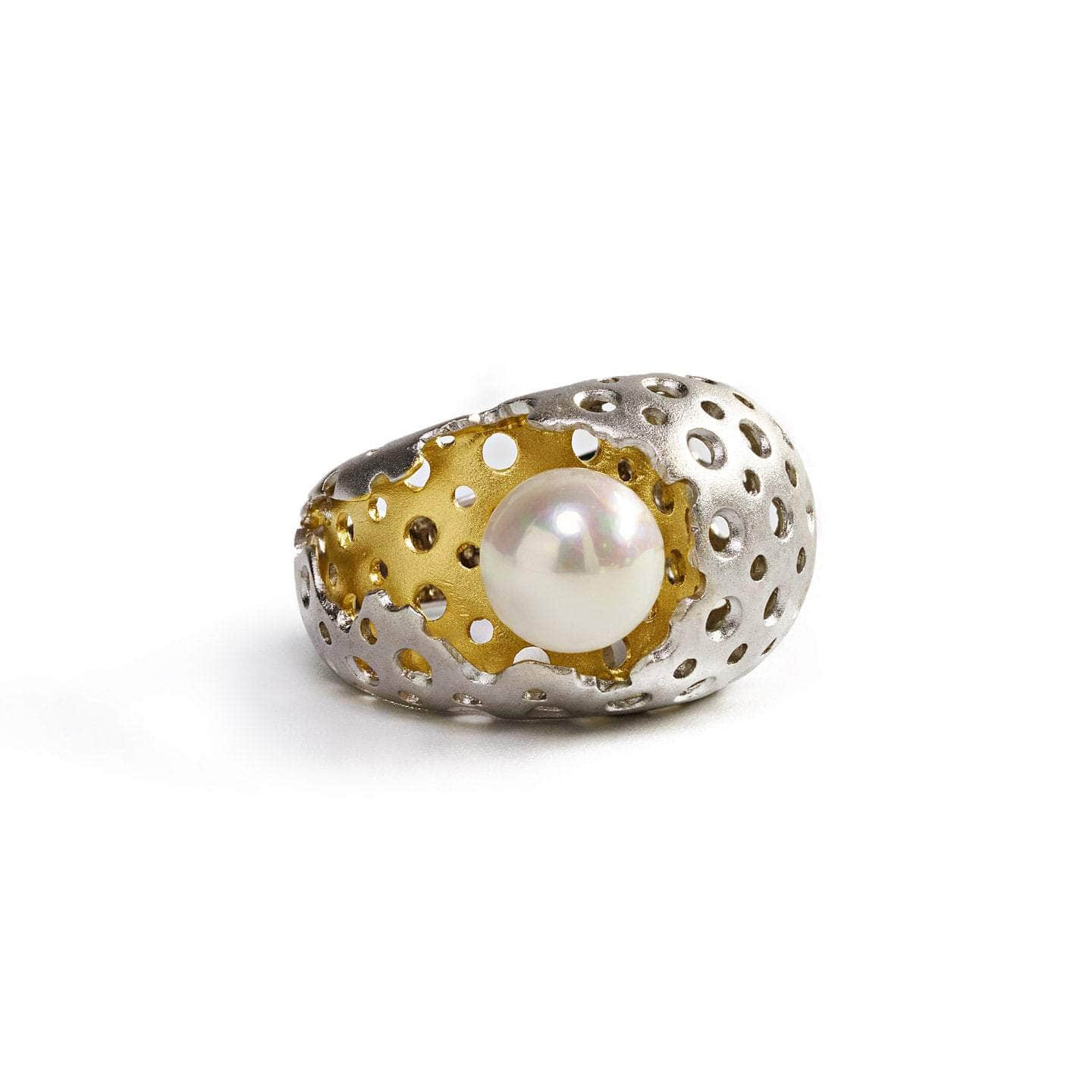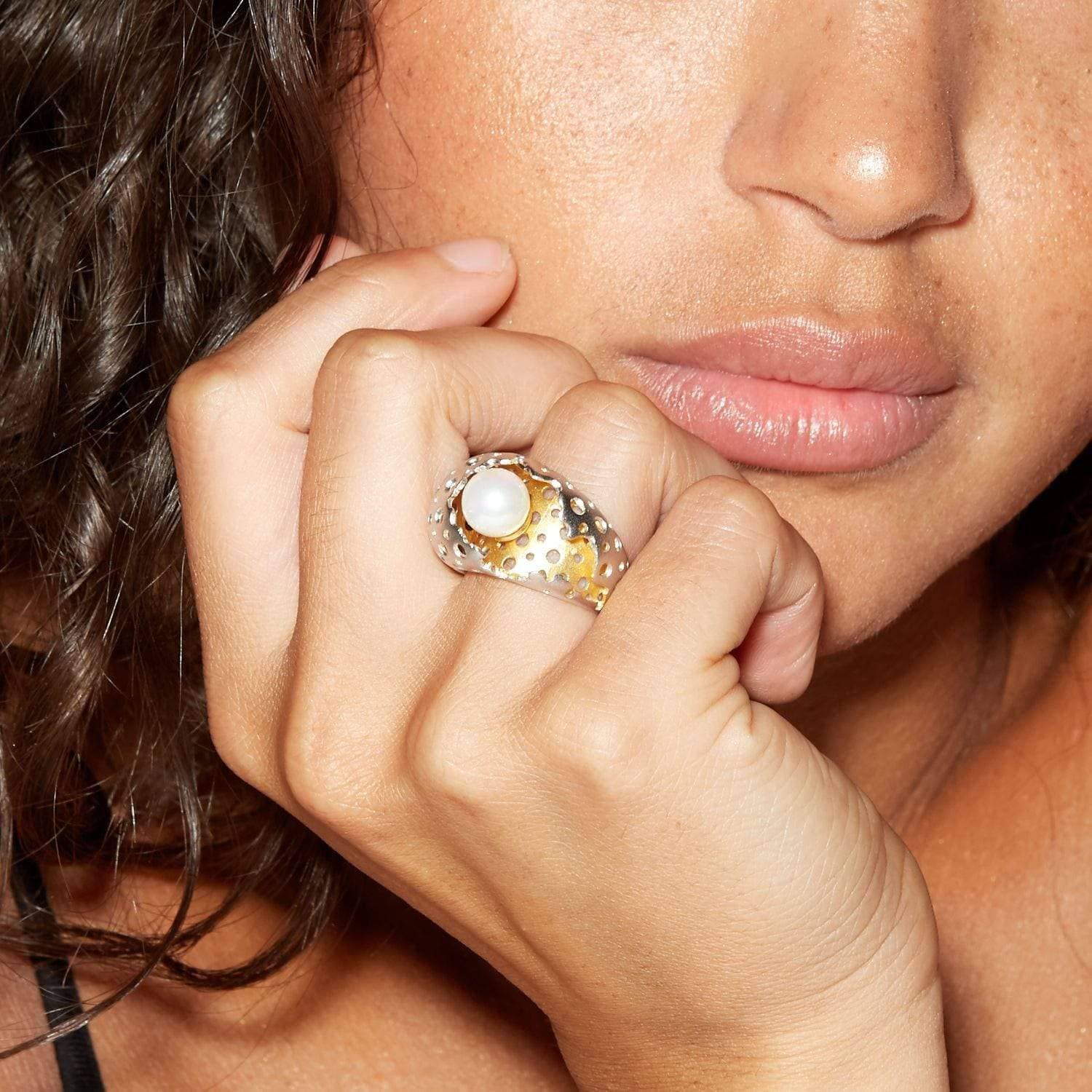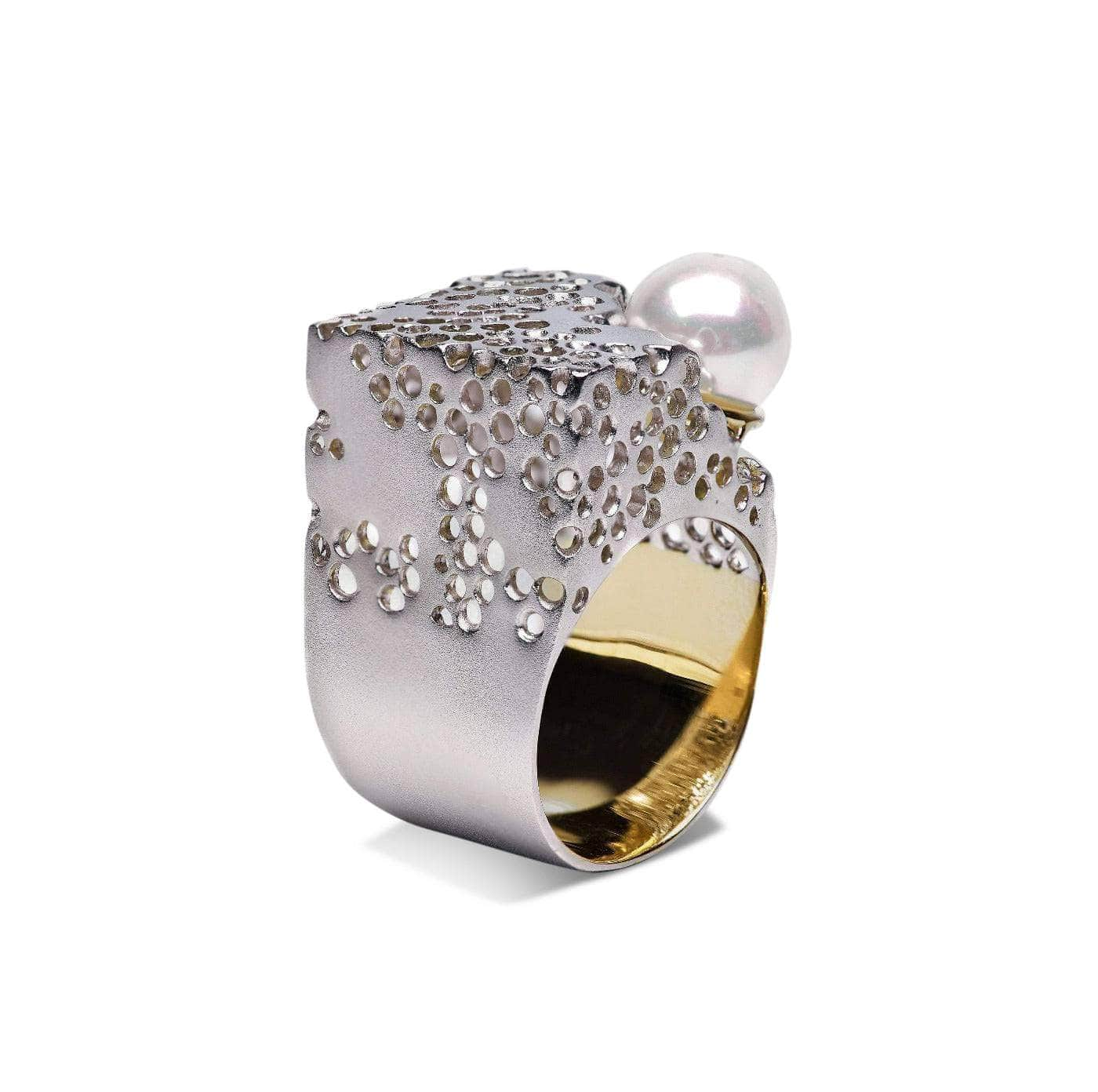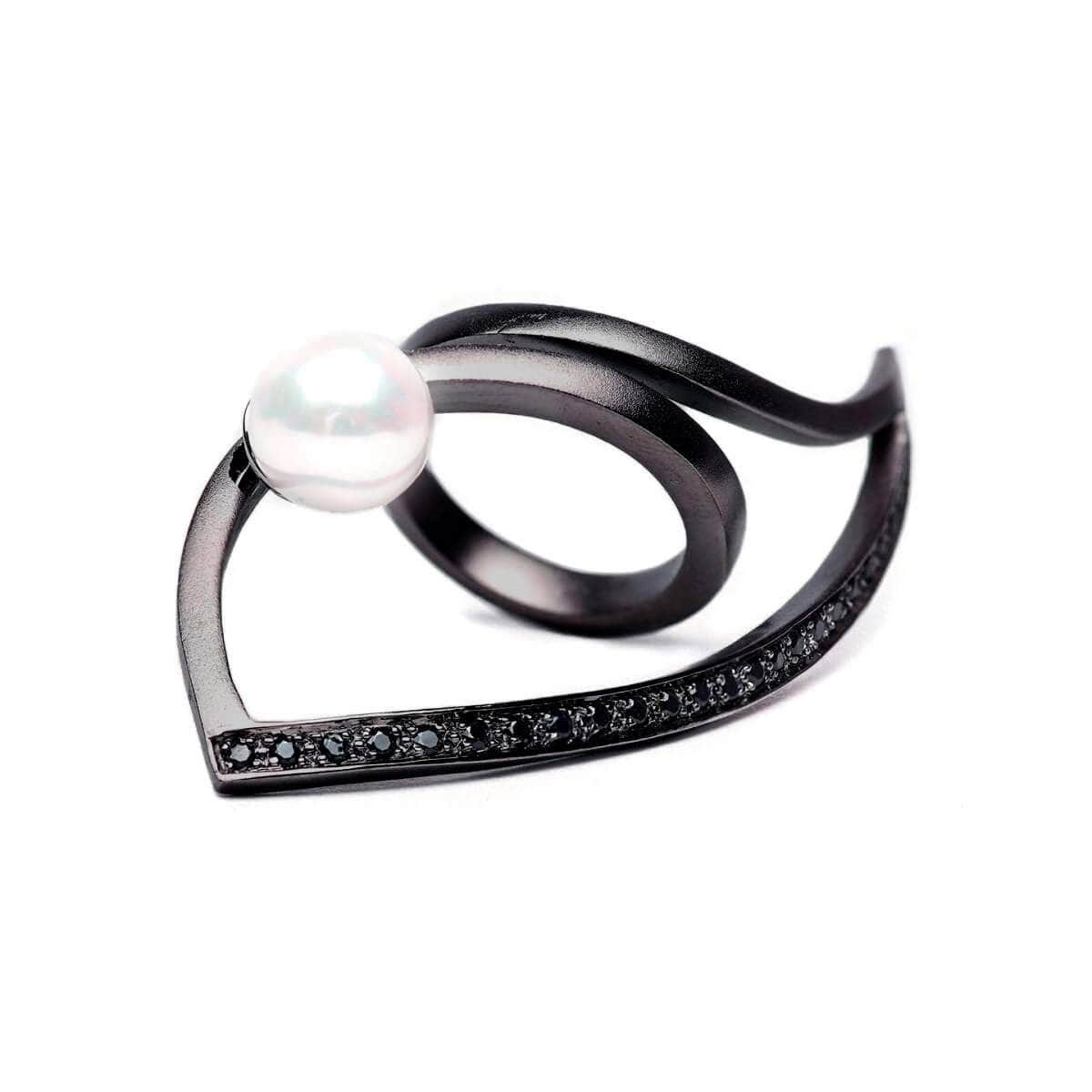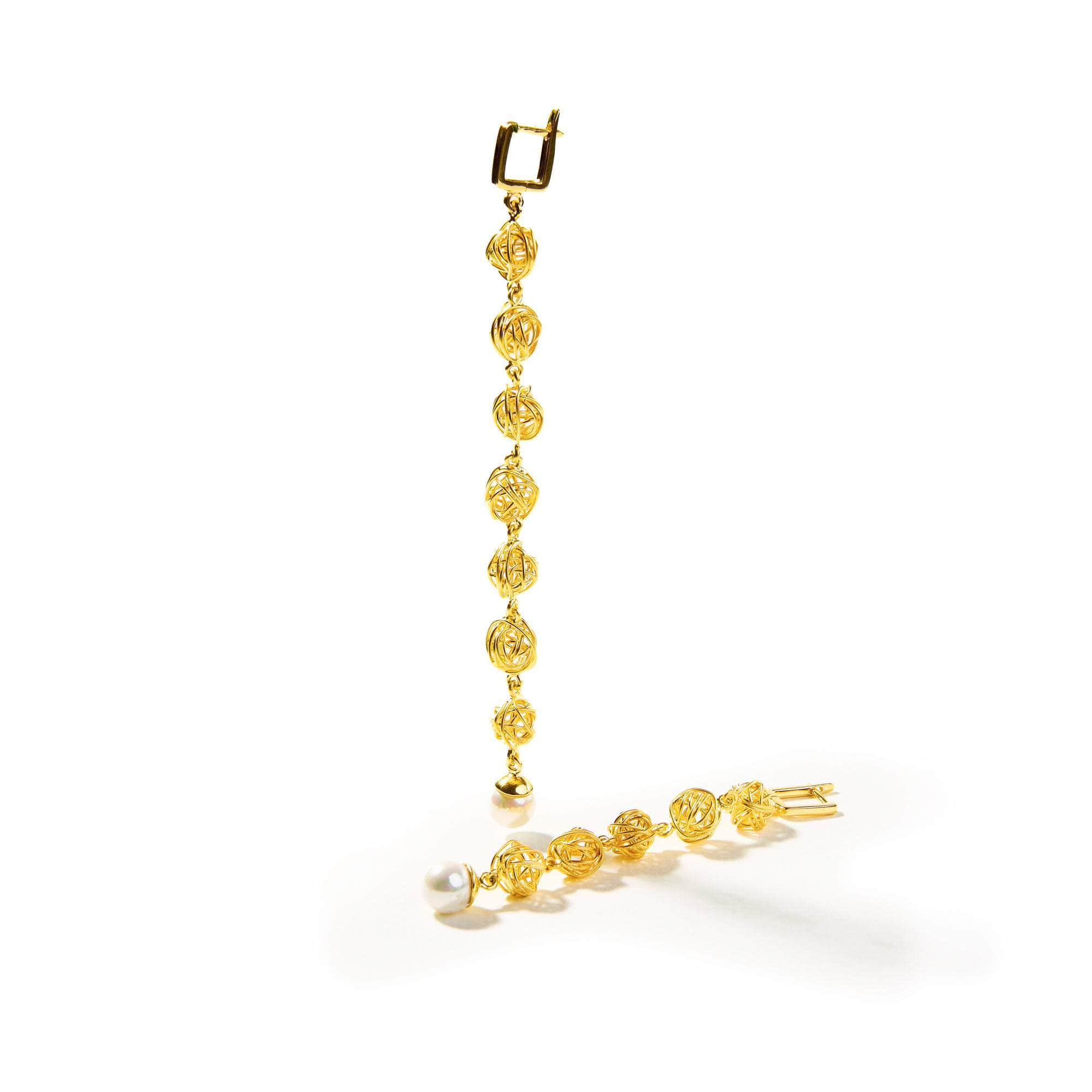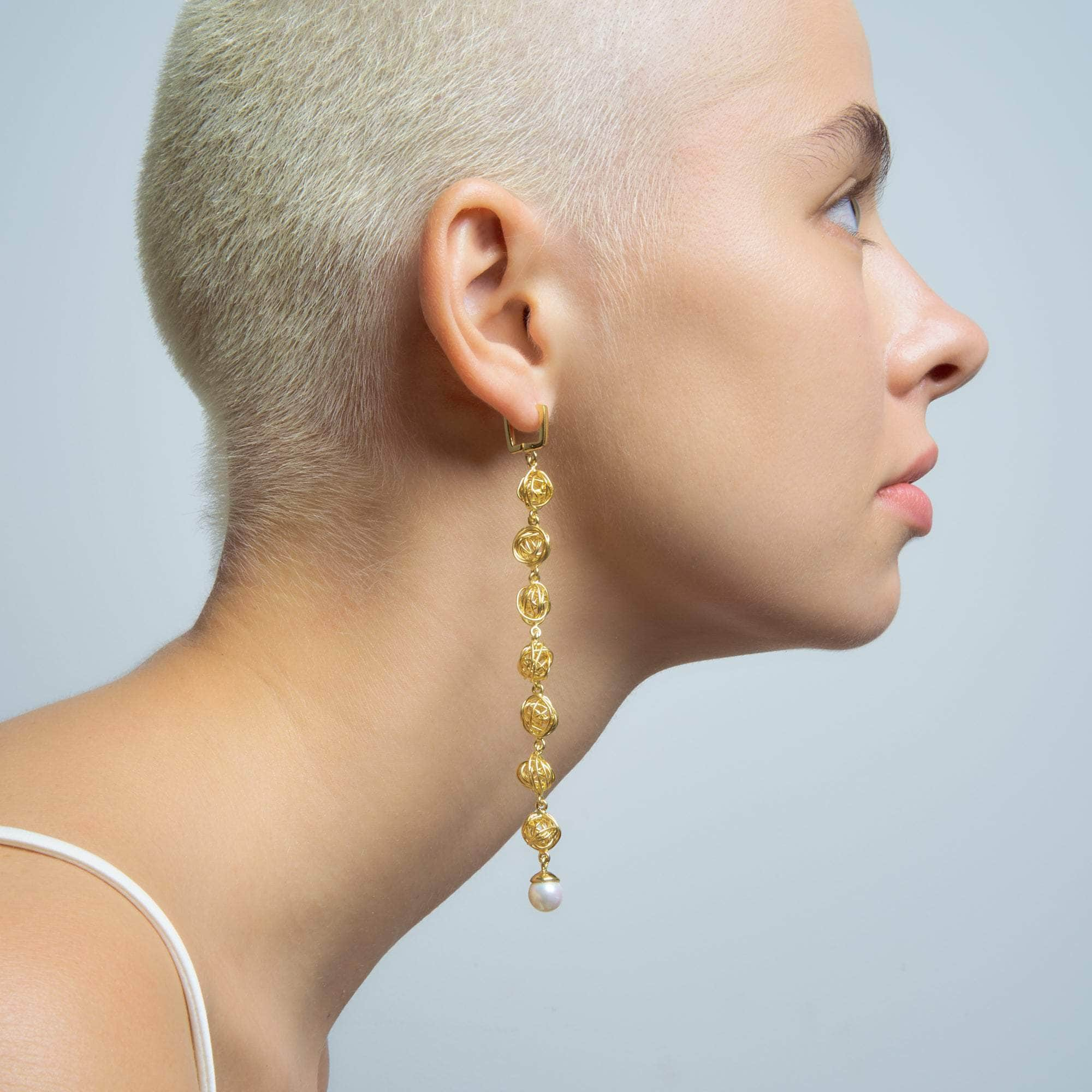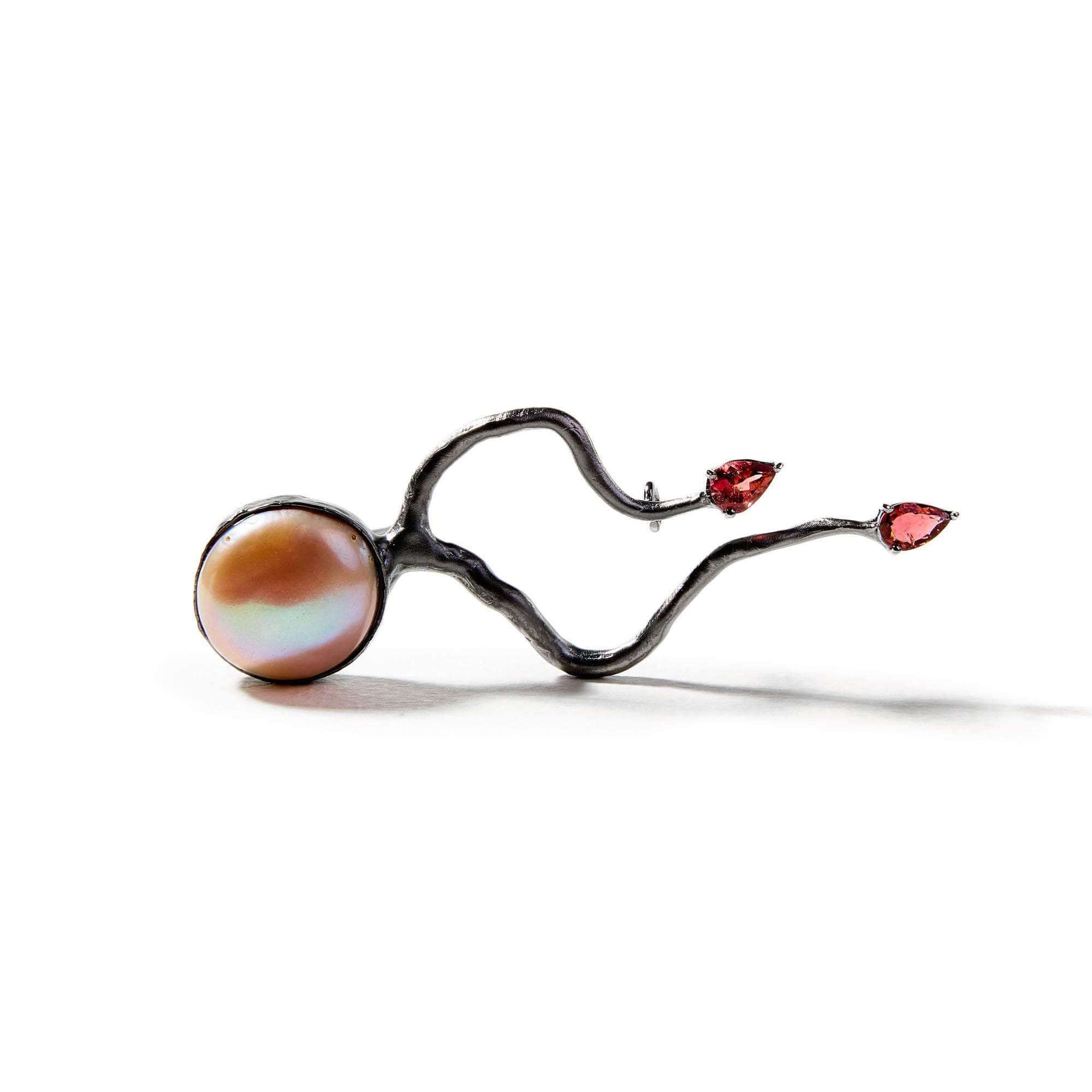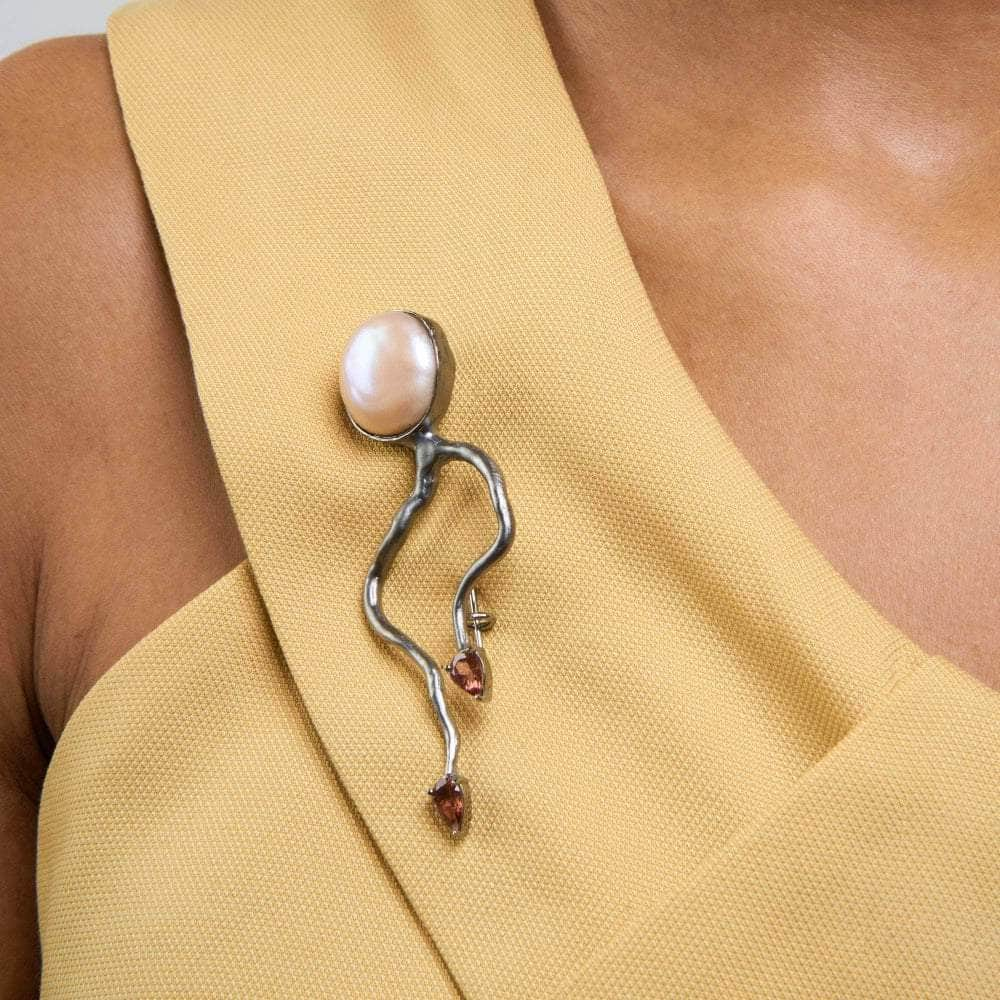Natural Pearls and Modern Jewelry Trends
From Freshwater to Melo Melo: All You Need To Know About Natural and Cultured Pearls
In a small seaside village in Thailand, a fisherman's evening took an unexpected turn when he found a pearl worth
almost half a million dollars in his catch. This lucky discovery brings us into the domain of the rarest and the most
precious pearls, knowing that the sea holds not just sustenance but many hidden treasures.
Pearls are indeed much
more diverse than commonly thought, and there exist some exceptionally rare and precious varieties that captivate
collectors and enthusiasts alike. Here are just a few examples of the rarest and most precious pearls in existence:

Melo Melo Pearls
Amidst the shells and seaweed in the Thai fisherman's catch, the half-million-dollar surprise wasn't just any pearl – it was a Melo Melo pearl. Born within the coils of Melo Melo sea snails in the Gulf of Thailand, these pearls boast warm, orange hues with flame-like patterns, making them distinctively beautiful. As layers of nacre envelop an irritant within the Melo Melo shell, each pearl becomes a unique testament to the unpredictable beauty of the sea. Discovered by local fishermen during their routine catches, Melo Melo pearls are more than just treasures hidden in plain sight. They represent a connection between the simplicity of coastal life and the unexpected riches that lie beneath the waves.
Giga Golden Pearls
Under the ocean's surface lies another hidden gem, the Giga Golden Pearl, born within the colossal Tridacna gigas clam. These pearls are substantial in size and smooth in surface, with layers of nacre delicately formed around an initial irritant, creating living testaments to the ocean's grandeur.
Conch Pearls
Originating from the Queen Conch sea snail, these pearls are incredibly rare and highly prized for their unique flame-like patterns and vibrant colors, ranging from pink and orange to brown.
Abalone Pearls
Produced by abalone mollusks, these pearls are characterized by their iridescent and vibrant colors, displaying a stunning play of blues, greens, and purples. They are relatively uncommon, making them highly valued.

Blue Pearls
Natural blue pearls are exceptionally rare and are often found in abalone mollusks or saltwater oysters. The blue coloration is attributed to the presence of trace elements like cobalt or copper, and these pearls are highly coveted for their uniqueness.
Conchita Pearls
Named after the Queen Conch, Conchita Pearls are exceptionally rare and known for their intense pink coloration. These pearls are prized for their beauty and scarcity.
Black Tahitian Pearls
Cultivated in the waters around Tahiti, these pearls are famous for their large size and striking dark colors, ranging from peacock green to shades of black. The natural dark hues make them unique and highly sought after.
The Birth of Sea Treasures: How Pearls Are Formed
Regardless of their price and the type of mollusk that produces them, all pearls share the same fundamental
mechanism of formation. The process of pearl formation is a natural occurrence that occurs in response to an irritant
within the mollusk's shell.
Pearls are formed inside the shells of certain mollusks as a defense mechanism
against irritants. When an irritant, such as a grain of sand or a parasite, enters the mollusk's shell, the organism
secretes layers of nacre (a combination of calcium carbonate and protein) to coat the irritant. Over time, these
layers build up and create a lustrous and iridescent pearl.
Once the pearl has reached a desirable size and
quality, it can be harvested. In the case of natural pearls, this happens when a diver collects them from the wild.
For cultured pearls, the pearl farmer carefully extracts the pearl from the mollusk.
This mechanism remains
consistent across all pearls, whether they are natural or cultured and regardless of the specific species of mollusk
involved. The diversity in pearl types arises from the unique characteristics of different mollusk species, the
environments in which they live, and the specific conditions under which the pearls are cultivated or formed
naturally.
Ultimately, the enchanting beauty of pearls emerges from the natural alchemy that takes place within
the confines of a mollusk's shell, where an initially bothersome intruder transforms into a lustrous and prized gem
through the meticulous layering of nacre.
Natural Wild vs. Cultured Pearls
Pearls can be either wild or cultured. In the past, wild pearls, prized for their numerous nacre layers, were highly valued. However, pearl hunting has been globally banned since the early to mid-20th century due to overharvesting and ecological concerns. What you commonly find in jewelry today are cultured pearls, a more sustainable alternative where pearls are intentionally cultivated under controlled conditions, ensuring a steady supply without compromising the natural oyster populations. This shift has not only made pearls more accessible but also reflects a conscientious effort to protect marine ecosystems.
Natural Wild Pearls
Natural wild pearls, often simply referred to as natural pearls, are formed without any human intervention in the wild, typically within various species of oysters and mollusks. These pearls are distinguished by their unique beauty, irregular shapes, and the depth of their nacre layers. Here's more information about natural wild pearls:
Basra Pearls
Originating from the Persian Gulf, these natural pearls are historically renowned for their quality and luster.
Akoya Pearls
Found in Japanese Akoya oysters, Akoya pearls are known for their round shape and high luster.
South Sea Pearls
Produced by Pinctada maxima oysters, South Sea pearls are among the largest and most valuable pearls, known for their size and satiny luster.
Tahitian Pearls
Cultivated around the islands of French Polynesia, Tahitian pearls are famous for their dark colors, ranging from peacock green to shades of black.
Biwa Pearls
Historically from Lake Biwa in Japan, Biwa pearls are freshwater pearls known for their irregular shapes and unique colors.
Natural Cultured Pearls
Cultured pearls have become a staple in the world of pearls, offering a sustainable and controlled alternative to natural wild pearls. Cultured pearls have not only democratized access to these beautiful gems but have also allowed for continued innovation in the jewelry industry. Their journey from a carefully cultivated nucleus to a finished piece of jewelry represents a harmonious blend of human ingenuity and the inherent beauty of nature. Here's a deeper look into cultured pearls:
Akoya Cultured Pearls
Cultivated in Akoya oysters, these pearls are popular for their classic round shape and high-quality luster.
Freshwater Cultured Pearls
Grown in freshwater mussels, freshwater pearls come in various shapes and colors, including white, pink, and lavender.
Tahitian Cultured Pearls
Cultivated in the same waters as natural Tahitian pearls, these cultured pearls share the dark and exotic colors of their natural counterparts.
South Sea Cultured Pearls
Cultivated in the warm waters of the South Seas, these pearls are similar to natural South Sea pearls, known for their large size and satiny luster.
Keshi Pearls
These are small, non-nucleated pearls that can occur accidentally in both saltwater and freshwater mollusks during the culturing process.
Mabe Pearls
Mabe pearls are hemispherical cultured pearls that grow against the inside shell of the mollusk, rather than free within the tissue.
Blister Pearls
Formed when a pearl sac detaches from the mollusk's inner surface before the pearl is fully developed. The blister pearl is then cut from the shell, including the pearl.
Freshwater Pearls: Why They Are So Popular in Modern Jewelry
Freshwater pearls, born from the tranquil depths of lakes and rivers, have emerged as a distinctive and versatile
player in the realm of pearl jewelry. Unlike their saltwater counterparts, freshwater pearls are cultivated in a more
varied environment, offering a range of shapes, sizes, and colors. This diversity has made them a favorite among
contemporary jewelry designers seeking to break away from traditional norms.
What sets freshwater pearls apart
is their unique formation process. Cultivated in mussels rather than oysters, freshwater pearls are often nucleated
with small pieces of mantle tissue. This technique allows multiple pearls to develop simultaneously within a single
mussel, contributing to their accessibility and affordability.
The beauty of freshwater pearls lies in their
irregular shapes, which can include round, oval, button, and the charmingly asymmetric baroque. Their colors span a
delightful palette, encompassing classic whites, soft pinks, and lavender hues. This natural variety adds a touch of
individuality to each pearl, making them well-suited for both casual and formal jewelry designs.
Freshwater pearls
have become a cornerstone of modern jewelry, appreciated not only for their aesthetic appeal but also for their
sustainable cultivation methods. Their abundance in the market has opened up new possibilities for creative
expression, allowing designers to craft pieces that resonate with a broad audience. Whether adorning a string of
pearls for a timeless look or featured in a contemporary and unconventional design, freshwater pearls continue to
captivate with their understated elegance and accessibility.
Pearl Revolution: German Kabirski Jewelry with Organic Freshwater Gems
German Kabirski's jewelry embraces the beauty of freshwater pearls in all their forms. His serial geometric designs often highlight the classic combination of round black and white pearls, creating a timeless and minimalistic aesthetic. For his unique, one-of-a-kind pieces, Kabirski opts for large irregularly shaped baroque or keshi pearls as central elements. These pearls, with their distinctive forms, add an element of individuality and organic charm to his creations. In essence, Kabirski's use of freshwater pearls reflects a blend of tradition and modernity, showcasing the diverse and captivating nature of these gems in his jewelry designs.
Round Black and White Pearls in German Kabirski Minimalist Collection
In German Kabirski's jewelry, simplicity takes center stage with minimalistic geometric designs featuring black and white freshwater pearls. Often, these classic pearls are used without elaborate settings, showcasing their beauty in unexpected ways. Kabirski's unconventional approach breaks traditional rules, allowing the pearls to stand alone or be set unexpectedly. The result is a collection of pieces that balance simplicity with sophistication, redefining the traditional expectations associated with pearl jewelry.
Baroque and Keshi Pearl in German Kabirski Statement Pieces
German Kabirski's jewelry takes a bold stance on self-expression through unique, one-of-a-kind designs. In these alter ego pieces meant just for one person, large baroque or keshi pearls play a pivotal role, celebrated for their unconventional and freeform beauty. Kabirski's choice of these pearls adds an element of wild sophistication to each creation, breaking away from the norm. By embracing the irregularities of these pearls, Kabirski crafts designs that are not only visually striking but also resonate with a sense of individuality.
Navigating the Mystical Waters of Meaning and Protective Powers of Pearls
Throughout history, pearls have been believed to possess various symbolic meanings and mystical properties. In many
cultures, pearls are considered symbols of purity, wisdom, and wealth. Additionally, they are thought to have calming
and balancing energies, promoting harmony and a sense of well-being. Some belief systems attribute pearls with
protective qualities, shielding the wearer from negative energy and bringing good fortune.
While there's no
scientific nod to these tales, pearls continue to twirl in the dance of quirky folklore. In German Kabirski's offbeat
designs, these pearls play a role beyond just looking pretty—they become tiny, unconventional talismans, winking at
the age-old stories and offering wearers a whimsical connection to the quirks of tradition. So, whether you're after
wisdom or just want to keep things a bit magical, don a Kabirski creation and let those pearls work their quirky
charm.
